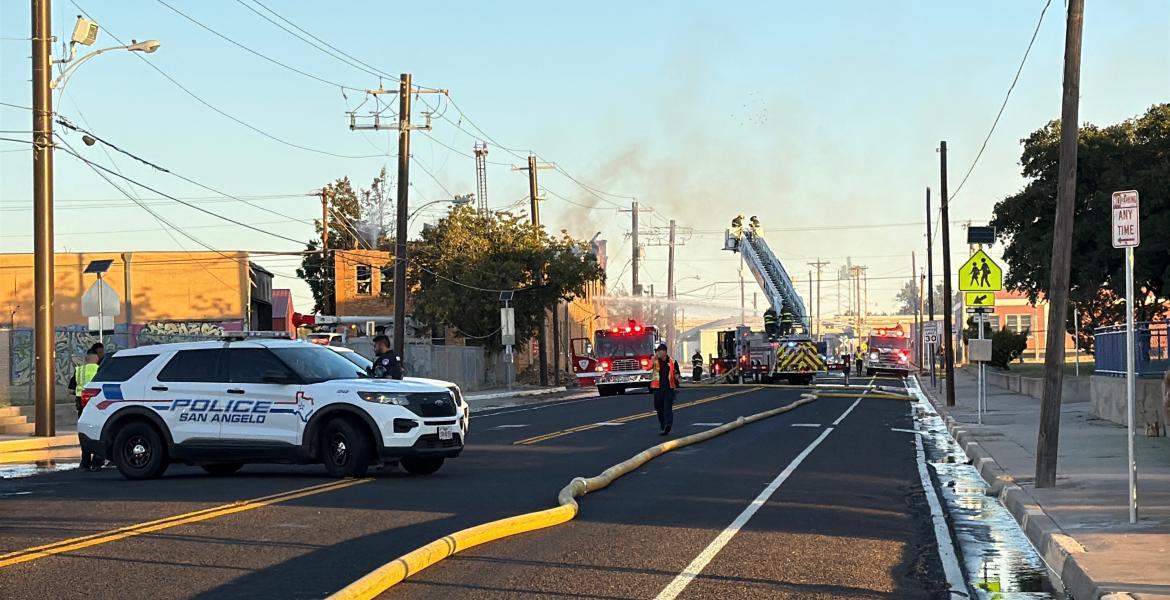Now that school is underway, many Tom Green County teenagers have a lot on their minds and things to juggle in their lives, including homework, tests, planning for college, adjusting to college life, determining who to take on a date to Homecoming and avoiding the wrong choices that can affect their lives for years to come. Unfortunately, those choices, in relation to sexually transmitted diseases, have the County and Texas in a continual rut since the numbers of teens diagnosed with STDs began to spike in 2009.
According to the Texas STD and HIV (Human Immunodeficiency Virus) Surveillance Reports provided by the Texas Department of State Health Services, Tom Green County Chlamydia Cases jumped from 2009 to 2010 by 92 percent; Gonorrhea cases went up by 79 percent; and from 2010 to 2011, Syphilis Cases spiked by 50 percent. Not to mention, the cases of HIV went up by 30 percent from 2012 to 2013. Since these spikes, the numbers have remained steady despite a minor downturn in some areas in 2014.
Registered Nurse Marie Aguilar, who is also the nurse manager for the City of San Angelo-Tom Green County Health Department, said, “We see [people] of all ages walk through our doors coming in for our services. I have been with the City for 18.5 years, and through those years, I have seen a gradual increase.”
Granted, the statistics and cases Aguilar referred to relate to people of all ages, but in Texas, some of the highest numbers of sexually transmitted disease affect 15 to 19-year-old males and females. Out of the two groups, teenage girls have a much higher rate of infection; however, the statistics may be somewhat skewed said Kathe A. Conner, R.N., FMP.
Conner, who has worked at the University Health Clinic and Counseling Services at Angelo State University for 18 years, said, “I’m going to guess the reason why you’re seeing more girls is because they’re going in to see their OBGYN, and they’re getting regular pap smears and regular checkups; so that means more girls are getting tested. That doesn’t mean though that there are necessarily more girls with STDs than guys.”
If that’s the case, then many male teenagers in Tom Green County may not know they have an STD, may not have the health resources, or may be afraid to get tested, which leaves their partners and future partners at risk.
To understand the numbers medical professionals in the County and Texas diagnose and treat annually, the following table lists the common types of STDs (Chlamydia, Gonorrhea and Syphilis), HIV, and the number of cases associated with pre-teen and teenagers from 10 to 19 years for the past five years. It also addresses gender and race in Texas and overall numbers for Tom Green County. This information was provided by Texas Department of State Health Services.
STD Cases in Texas: Years 2009 to 2014
| Male | 2009 | 2010 | 2011 | 2012 | 2013 | 2014 |
Chlam. Gon. Syph. HIV | 23,344 13,281 4,462 3,405 | 26,837 14,348 4,249 3,485 | 29,664 14,583 4,399 3,422 | 30,577 15,221 5,328 3,520 | 31,850 16,333 5,427 3,541 | 33,273 17,556 5,708 3,582 |
| Female | 2009 | 2010 | 2011 | 2012 | 2013 | 2014 |
Chlam. Gon. Syph. HIV | 82,972 15,977 2,446 965 | 91,205 16,988 2,125 992 | 95,729 16,492 1,791 888 | 96,666 17,140 1,772 840 | 96,171 17,014 1,646 816 | 94,581 16,840 1,694 823 |
| White | 2009 | 2010 | 2011 | 2012 | 2013 | 2014 |
Chlam. Gon. Syph. HIV | 21,351 4,658 1,284 944 | 25,045 5,500 1,116 923 | 27,867 5,576 1,238 879 | 29,187 6,343 1,669 909 | 31,453 7,386 1,622 935 | 27,818 7,244 1,686 919 |
| Black | 2009 | 2010 | 2011 | 2012 | 2013 | 2014 |
Chlam. Gon. Syph. HIV | 32,226 15,230 3,430 1,735 | 35,284 15,842 3,086 1,764 | 36,370 14,550 2,750 1,595 | 35,125 14,369 2,626 1,595 | 32,873 13,826 2,469 1,634 | 30,188 13,343 2,642 1,649 |
| Hispanic | 2009 | 2010 | 2011 | 2012 | 2013 | 2014 |
Chlam. Gon. Syph. HIV | 44,053 7,424 2,064 1,475 | 48,519 8,070 2,047 1,555 | 51,404 9,014 2,110 1,585 | 49,258 9,160 2,649 1,638 | 49,277 9,450 2,794 1,581 | 45,514 8,820 2,813 1,650 |
| Other | 2009 | 2010 | 2011 | 2012 | 2013 | 2014 |
Chlam. Gon. Syph. HIV | 2,570 550 87 44 | 2,772 559 96 58 | 1,996 411 83 73 | 2,372 544 113 64 | 2,624 531 135 78 | 2,598 589 164 83 |
| Age 10-14 | ||||||
Chlam. Gon. Syph. HIV | 1,282 331 13 6 | 1,325 324 14 5 | 1,411 348 10 5 | 1,381 345 9 9 | 1,177 278 5 6 | 1,116 293 8 7 |
| Age 15 – 19 | ||||||
Chlam. Gon. Syph. HIV | 37,340 9,143 657 254 | 39,966 9,474 592 252 | 41,193 9,171 509 230 | 39,392 9,074 478 243 | 37,043 8,273 424 206 | 35,143 7,862 444 215 |
| Tom Green County | 2009 | 2010 | 2011 | 2012 | 2013 | 2014 |
Chlam. Gon. Syph. HIV | 564 89 9 7 | 616 112 7 3 | 681 137 14 6 | 665 119 8 4 | 645 210 36 12 | 641 237 25 10 |
Based on the numbers in this chart, females lead in STDs four and five times more than males, but have much less cases of HIV. Additionally, Hispanics and Blacks tend to have higher numbers than whites, and the numbers for the age 15-19 are staggering compared to the younger 10-14 group. The biggest increases in STDs occurred in 2010, with those numbers continually increasing, and somewhat decreasing along the way. In 2014, the numbers for STDs continue to show a decline, except where males are concerned.
In the 2013 Texas STD and HIV Epidemiologic Profile (*pdf), Rebecca Filipowics and Shelley Lucas with the Department of State Health Services, wrote that scientific evidence shows the differences in rates in STDs and HIV infection in racial/ethnic minorities are only partially explained by differences in risk behaviors and risk factors. Therefore, the reason the numbers for Blacks and Hispanics tend to be higher than their white counterparts has to do with “the economic and social conditions that influence the health of individuals and communities.” Overall, for optimal health, people need to possess physical, social and personal resources, the profile noted.
“For example, poverty and low levels of educational attainment are related to employment and housing instability, incarceration, lack of access to healthcare, and greater exposure to violence and environmental health threats,” the authors wrote. In addition, one in four Hispanics and Blacks in Texas have incomes below the federal poverty level; educational attainment is lower for Hispanics and Blacks than for Whites; and, one in three Hispanics and one in five Blacks lack health insurance, which contributes to vulnerabilities to STD and HIV, Filipowics and Lucas noted.
Despite the racial and gender disparities, Texas ranked third in 2013 for congenital syphilis, and 13th among states for primary and secondary syphilis cases, noted Health Services. At this time, Tom Green County doesn’t top the list for cases, but the problem facing teenagers today keeps area agencies busy.
In fact, the City’s Health Department offers STD testing three days a week: Mondays, Wednesdays and Thursdays by appointment, Aguilar stated. The fee is $25. Aguilar and her staff test in all areas mentioned in the table. Because getting tested can be scary and overwhelming for teenagers, the Health Department staff does what it can to ensure visitors feel as comfortable as possible.
“Everything is confidential in our clinic. The only person taken to the back is the patient to ensure that confidentiality and comfort,” Aguilar said.
As for students at ASU, Conner said the staff at the Health Clinic also works hard to ensure students feel secure.
She stated, “We try to make [our clinic] a friendly place. We have two secretaries in the front who are very warm and welcoming when students come to help allay their fears. When they come to the window, whoever else is in the lobby won’t know what they’re in for. We don’t treat them any differently.”
Conner added that students who are being tested get taken into a room like any other student, and staff will close the door to provide them with a feeling of confidentiality. Conner said staff wants students to feel their visit is valid, and treatment available.
“We’re not judging them, either,” Conner added. “We’re just talking to them matter-of-factly, asking them questions, answering their questions and giving them information to empower them to take better care of themselves.”
For this service, students at ASU pay a $10 fee because of an agreement the university has with the State of Texas.
“They send us the supplies and ASU takes the specimens. We then send them to the state lab for results,” Conner said.
As for whether or not Conner and her staff have noticed an increase of STDs at ASU, the nurse practitioner said, “In 18 years, things really haven’t changed overall. Freshman still come in and they’re really anxious about starting a new phase in their lives, and all they need is someone to kind of direct them in things that they might not know how to do, or how they might need to go about taking care of themselves. It’s always new faces, but the same thing.”
For more information on STD symptoms and testing centers in San Angelo, click here.
Sources:
- “Congenital Syphilis in Texas.” Texas Department of State Health Services.
- Filipowics, Rebecca and Shelley Lucas. "2013 Texas STD and HIV Epidemiologic Profile. Texas Department of State Health Services.
- “Texas HIV Surveillance Report.” Texas Department of State Health Services.
- “Texas STD Surveillance Report.” Texas Department of State Health Services.
Subscribe to the LIVE! Daily
Required






Comments
Listed By: jasdon digson
How sad! Such a simple issue, becoming an enormous problem. Why don't they just say no? Right? Just say no. So, so, simple.
- Log in or register to post comments
PermalinkListed By: B M
It's a wonder STD rates are on the rise when our fine government down in Austin decided to teach only abstinence based sex ed. Americans are more likely than Europeans to have an STD, and yet our fine leaders and voters still believe that abstinence only education is the way to go.
You want to decrease STD rates and the abortion rate? Continue teaching high schoolers that "no" is 99.9% effective. Then teach them that if they do go through with it be safe.
- Log in or register to post comments
PermalinkListed By: Jim JustJim
The bottom line is this:
The conversation might be uncomfortable, parents, but you need to teach your children about sex. If you don't, someone will - the guidance counselor, the best friend, the internet, or the scumbag with chlamydia. Your choice, Mom and Dad.
I think if we want to see those numbers decrease, we might need to consider turning to our public education system. Maybe they can flex the muscle these spineless parents lack. Sex ed, and I mean REAL sex education, that teaches young people not only about the risks of becoming sexually active but also how to safely prepare for those risks, is the only real way this is going to change.
Or I could be thinking about this too hard. It could just be lack of proper healthcare and hygiene.
Yeah that's probably it, now that I think about it.
- Log in or register to post comments
PermalinkListed By: Masaru X
Jim, you're right. The need for education is the root of this, and really quite a few issues, across the board in our community. I wonder if "Big Daddy" saw the comparison to Europe BM made, felt a bit defensive, and then tried to deflect attention. At first his comment seems "racial," but when you look closely, even then it really has more to do with behavior. Still, his comment brought us into his questionable frame of thinking and I stepped in and used it as an opportunity to address Hispanics. My comments might give off the impression of “over-thinking” something, but it’s more correct to say that I’m trying to say too much without saying it, overtly.
If you haven't noticed, the news is filled with negative sentiments against the mass migration coming from Mexico and the many inconveniences created by it. It seems unfair for anyone, whether they’re a commenter on this site or a presidential candidate, to make such oddly biased comments against any group of people when the problems attributed to that group exist across the board or with only slight disproportion on their part. But this is an indication of where we stand in history. “Big Daddy” strikes me as the unfiltered voice of the local, (almost certainly white,) working class. We could try to slap his wrists with the ruler of political correctness or discount his perspective because of the ignorance his insensitivity belies, but I don’t think that’s helpful in any enduring sense.
Once again, I would like to leave here, under the heading of this embarrassing topic that the name of our Hispanic community has been dragged under, the simple idea that some concerned individuals more capable (and frankly, less eccentric,) than myself might want to consider reaching out to the local Hispanic community and try straightening out some of the dysfunctional kinks history has left in it: The glorification of poverty, resistance to learning, and an exaggerated brand of machismo that leaves a disproportionate number of young Hispanic men in prison over slighted honor. (Eh, foo’, don’t dis’ me!) It would be a draining task, something for someone whose life was firmly settled and who is relatively successful, and mostly an act of pious charity and compassion. It would also be deeply rewarding for anyone willing to undertake the task. I’m sure this is already going on to some extent, but we may need a more coherent picture of ourselves and our place in the larger community than we currently have.
In the editorial in the last e-mail that came out, Mr. Hyde writes that he “isn’t ready for Caesar.” He doesn’t realize that it’s too late. The tectonics of the situation have already changed drastically, and we’re just playing catch-up. Without going off into a rant of poorly elucidated ideas, I’d like for everyone to consider the effects on democracy of [1] an increasingly autocratic executive branch, [2] poorly educated immigrants from third world countries whose children receive substandard education, and [3] increasing socioeconomic disparity. These aren’t going away anytime soon… Education is a gift that cures innumerable ills.
- Log in or register to post comments
PermalinkPost a comment to this article here: